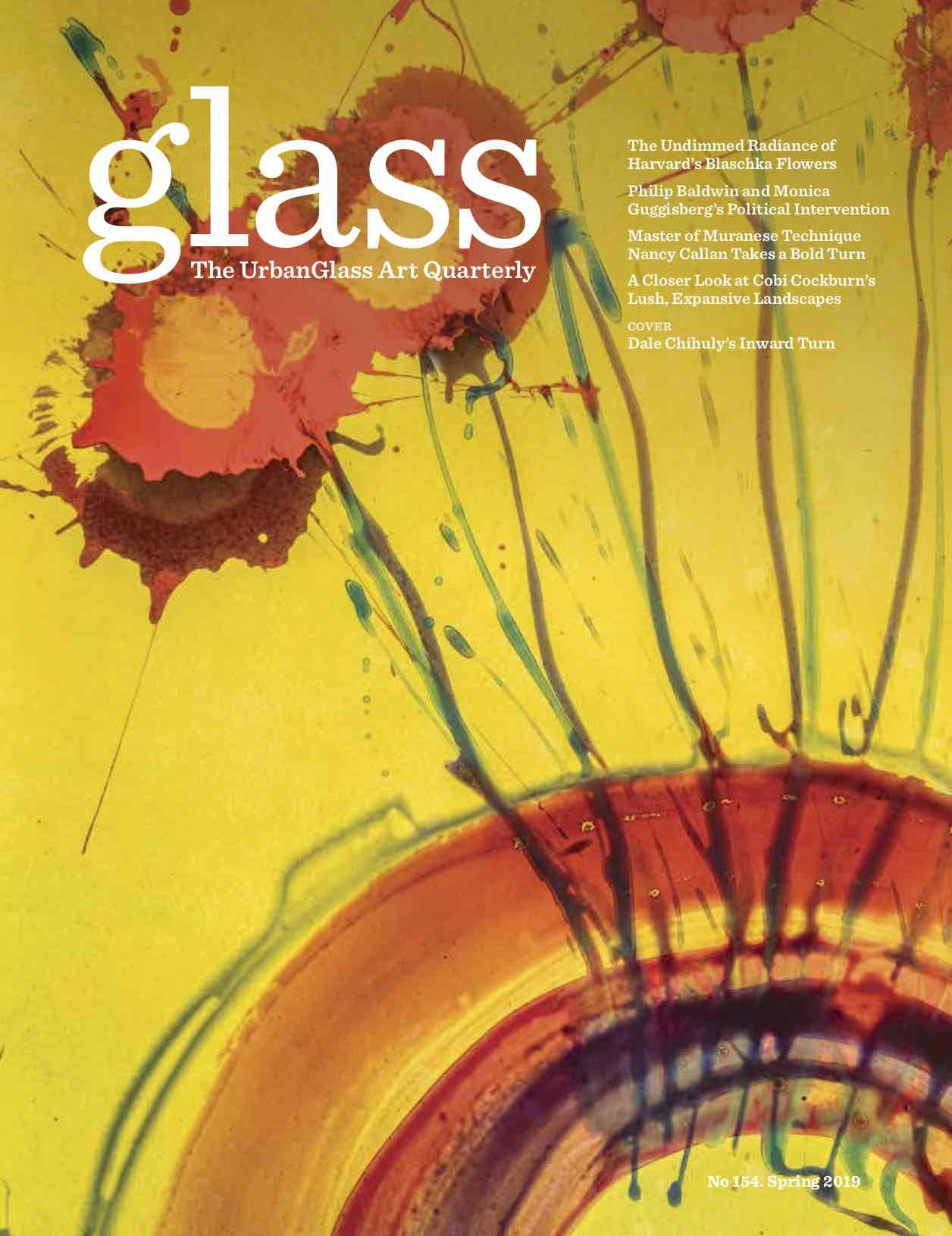The Spring 2019 edition of Glass: The UrbanGlass Art Quarterly (#154) is hitting newsstands and subscriber mailboxes. On the cover: "Glass on Glass," the newest series by Dale Chihuly, marking an inward turn for this world-famous artist known for intense coloration and flamboyance. Initially developed for a sanctuary for meditation at a Nebraska cancer center, the series of large translucent wall panels has become a focus for Chihuly, who is embracing the opportunity to work with more diluted colors and expanding the initial series. As contributing editor Victoria Josslin writes in her feature article, "without losing any of the spontaneous gestures and brilliant color that have always characterized his work, the artist has entered new territory ... "

Chihuly's panels were inspired, in part, by his visits to European cathedrals, where he experienced the spiritual power of stained glass. At Canterbury Cathedral, the glassblowing couple of Philip Baldwin and Monica Guggisberg brought Chihuly-esque glass assemblages to a major historic site in England, working with the theme of pilgrimage and migration, two very contemporary issues in Europe. As contributor Jeffrey Sarmiento writes: "These are not comforting works of craft, vessels you can easily take home and display on your mantelpiece." Instead, the artists have taken an opportunity to intervene in this historical destination for pilgrims with highly contemporary works that contemplate the plight of those fleeing war and famine on overloaded rickety vessels barely seaworthy.

Contributing editor William Warmus sees glassblower Nancy Callan's diverse body of work as notable both as a distillation of traditional Muranese technique with a distinctively American sense of color and design. While she has pursued glassblowing with a reverence for the past, she challenges some of its most basic rules, creating multilevel textured patterns, referencing Pop culture icons such as superheroes, and blazing a trail that is uniquely her own.

Speaking in a much more restrained vocabulary, Australian artist Cobi Cockburn has been developing her own distinctive language using multiple canes, which she fuses together to make intricate patterned panels that read almost like brushes of paint. An apt metaphor, according to contributing editor William V. Ganis, who calls Cockburn "a consummate experimenter," whose intricate and subtle works must be seen in real life to be fully appreciated, as photography tends to flatten the richness of her visual triumphs.

Our last feature for the Spring issue, is, fittingly, an appreciation for the Harvard Flowers, as the astonishing collection of botanical and invertebrate specimens by Leopold and Rudolf Blaschka are called. Regular contributor Alexander Castro traveled to Cambridge, Massachusetts, to visit with collection manager Jennifer Brown, and meditate on the aesthetic and philosophical issues of this remarkable "marriage of function, form, and curiosity" that brings visitors from around the world to marvel at these works of the hand -- and heart.
All this, plus reviews of new work by Laura Donefer, Etsuko Ichikawa, Eli Hansen, Oscar Tuazon, Shari Mendelson, Amy Lemaire, Robin Winters, Jerry Pethick, and many others.
Subscribe today and don't miss a single issue!





